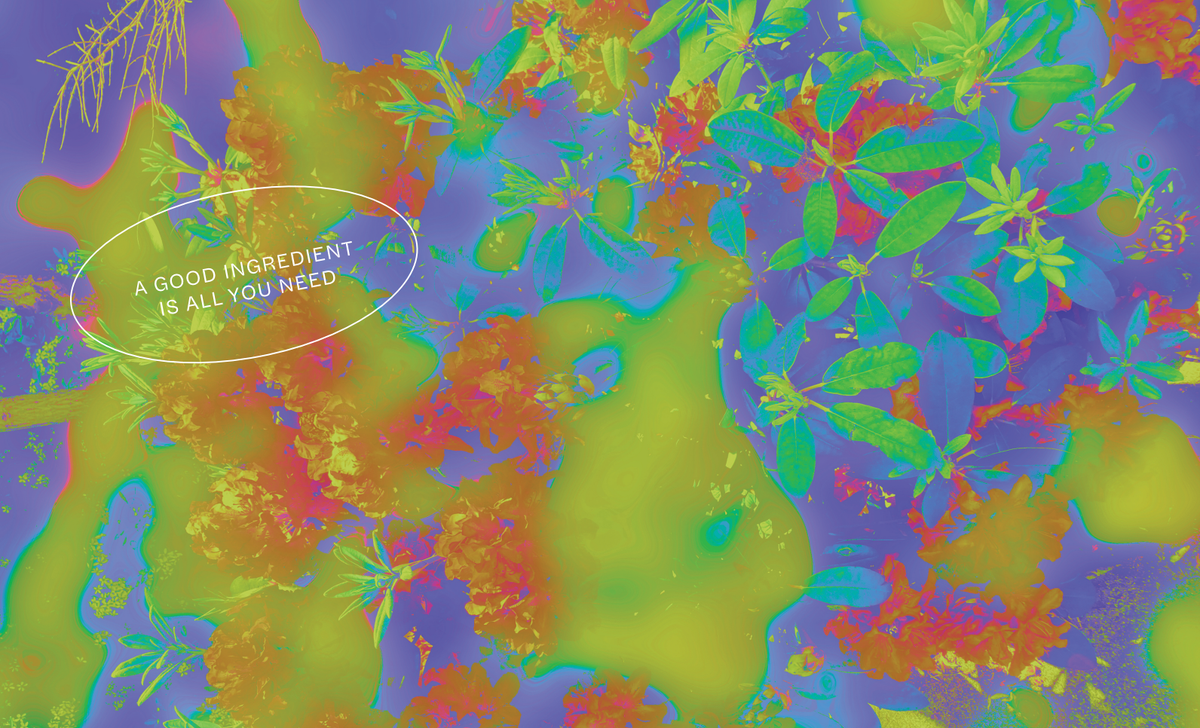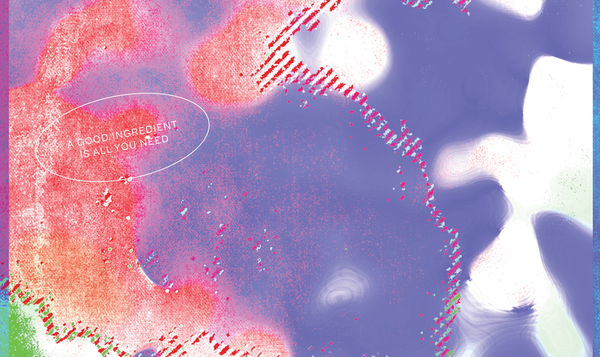October 2024 Subscription - On fungi and the 'Bank of Phosphorus'

Three days is all it took. 72 hours. The time it takes to ferment mucilage off coffee seeds in Ethiopia, transmuting all the valued and savoured flavours that result, is the time it took for the dock workers union representing all along the East coast of the US to arrive at a tentative agreement. 72 hours to reveal the full gravity of a continent half cut off from the world's goods - The true connectors, the 45,000 dock workers representing ports from Maine to Texas, holding the scissors in one hand, the strings of the economy resting between the shears in the other. Asking to be valued accordingly.
Ah, and we also got a gentle reminder that we do indeed make our own toilet paper, no need to hoard.
Leading up to the dock workers strike, of course, have been incredible delays relating to current world events. Many of you are notably observant and have reached out to ask about why certain coffees have been notably absent or at least heavily delayed. It’s these ripples through everything that remind us how we really are all connected. I can count those connections in the number of container ships on marinetraffic.com. If you've ever been curious about a friend on a flight and perused Flight Tracker - This is that, but for ocean freight. Go over there (I'll wait) and look at the map that loads. You'll notice something - You can barely see the ocean. It's thousands of green, red, blue arrows, each representing a vessel, the largest ones carrying 24,000 containers, and if each container was filled with coffee, there would be 19.2 metric tonnes, or 320 x 60kg bags inside each stacked metal box. This network of ships, looking at that marinetraffic.com map, are a sort of aquatic hyphae, a network reaching out, making it possible for someone in Ottawa, or Kansas City, or San Francisco to connect with the harvest from Agaro, or Gedeb or Bensa.
Fungi are at the beginning and end of things.
Before us, & certainly before coffee, there were mushrooms. Fungi were among the first life forms on land, ‘mining’ rocks for mineral nourishment, almost performing alchemy in turning those rocks into today’s soil. In the Late prehistoric Ordovician era over 400 million years ago, we somehow found out they formed a symbiotic relationship with liverworts (related to moss), the earliest plants. Fungi are the reason why plants are land things, and not ocean things. Today, we’re separated by vast oceans, but it was around 400 to 500 million years ago that our atmosphere was able to sustain animal life. But the plants had to be able to live on land first, making our environment rich enough to make it possible for life on earth as we know it.
A research team at the University of Leeds realized that the earliest plants didn’t have the means to be able to sustain life on land alone. They hadn’t yet evolved to make use of vascular systems or roots like today’s plants. The researchers identified that fungi in the soil exchanged phosphorus bound up in nearby rocks to the plants - Providing the missing ingredient for photosynthesis. This relationship between mycorrhiza and plants persist today.
That photosynthesis is (obviously) critical to our world since photosynthesis by plants on land is responsible for roughly half of the oxygen generation on this planet. It also requires phosphorous. We’re only just beginning to understand how plants get the phosphorus it needs to be able to do this, literally, life sustaining work.
It was fungi that encouraged life to flourish on land, moving away from small plantings on the margins of water into forests sprawling thousands of kilometres and whole ecosystems.
But how do plants and fungi interact with each other today? Do they still need each other or are we all sorted with synthetic fertilizer?
The Bank of Phosphorus
If you’ve been with us for a bit, you’ll know that aforementioned question is almost rhetorical - Mushrooms and plants (including coffee) definitely need each other. But like anything, statements like this come with a boatload of nuance.
Let’s start with the symbiotic fungi.
There's strong potential for a symbiotic relationship between plants and fungi - Plants supply the fungi with sugars, and the fungi enhance the ability of the plants to access hard to find and immobile nutrients, particularly phosphorous.
In fact, there was a study done in 2023 called “The mycorrhizal root-shoot axis elicits Coffea arabica growth under low phosphate conditions” Where the researchers:
- Confirmed that as with 70% of land plants, coffee is associated with arbuscular mycorrhizal (AM) fungi, but the molecular bases of this interaction are still not fully known.
- Introduced Funnelliformis mosseae (a friendly type of mycelium) to two Coffea arabica cultivars (‘Typica National’ and ‘Catimor Amarillo’). They were grown with limitation of access to phosphorus.
- They found the two cultivars revealed a strong biomass increase upon mycorrhization, even at low level of fungal colonisation, improving photosynthetic efficiency (greener healthier!) and plant nutrition. The more important iconic markers of AM symbiosis were activated: They detected two gene copies of AM-inducible phosphate (Pt4), ammonium (AM2) and nitrate (NPF4.5) transporters, which were identified as belonging to the C. arabica parental species (C. canephora and C. eugenioides) with both copies being up regulated. Transcriptomics data were confirmed by ions and metabolomics analyses, which highlighted an increased amount of glucose, fructose and flavonoid glycosides.
- In conclusion, both coffee cultivars revealed a high responsiveness to the AM fungus along their root-shoot axis, showing a clear-cut re-organisation of the major metabolic pathways, which involve nutrient acquisition, carbon fixation, and primary and secondary metabolism.
It’s amazing to hear about something that effectively titrates nutrients and ‘trades’ resources for the benefit of both parties. Having effectively a mycorrhizal-agronomist on board seems to help a coffee plant in a much more efficient way than testing the soil and estimating what the right NPK fertilizer ratio would be. It seems like when this friendly fungi come aboard to live with plants, the coffee plants are able to access nutrients from further away and uptake them more efficiently. This fungi is the great connector.
If there’s too much of a particular nutrient, the mycorrhizal system seems to ‘bank’ it. I came across another study exploring this phenomenon - In “Mycorrhizal fungi control phosphorus value in trade symbiosis with host roots when exposed to abrupt ‘crashes’ and ‘booms’ of resource availability”, researchers explored something called ‘Biological Market Theory’ in an attempt to define and understand how fungi and plants trade resources in symbiotic partnerships.
In their summary they indicate that:
“A key prediction of biological market theory is that individuals can influence resource value – meaning the amount a partner is willing to pay for it – by mediating where and when it is traded. The arbuscular mycorrhizal symbiosis, characterized by roots and fungi trading phosphorus and carbon, shows many features of a biological market. However, it is unknown if or how fungi can control phosphorus value when exposed to abrupt changes in their trade environment.
- We mimicked an economic ‘crash’, manually severing part of the fungal network (_Rhizophagus irregularis_) to restrict resource access, and an economic ‘boom’ through phosphorus additions. We quantified trading strategies over a 3-wk period using a recently developed technique that allowed us to tag rock phosphate with fluorescing quantum dots of three different colours.
- We found that the fungus: compensated for resource loss in the ‘crash’ treatment by transferring phosphorus from alternative pools closer to the host root (_Daucus carota_); and stored the surplus nutrients in the ‘boom’ treatment until root demand increased.
- By mediating from where, when and how much phosphorus was transferred to the host, the fungus successfully controlled resource value.”
Between the study with the two coffee plants, and this ‘phosphorus market theory’ study, it paints a pretty compelling picture that in the rise of fungicides and pesticides as a broad stroked reaction to the very real issues plaguing coffee farms, it’s in returning to the very beginning, like WAY back, to how plants were first able to thrive on land, with commensal fungi - That’s where we might find our way out of the cycle of chronic and endemic antagonistic fungal diseases like leaf rust and coffee wilt disease. Especially when fungal pests like leaf rust seem to mutate and shift faster than we can come out with new resistant hybrid coffee varieties, it feels like we’re always behind the 8-ball. Time to call in the great connectors and hopefully with their help we can fortify coffee plant systems before things like climate change make things even more difficult. I’ve got a lot of hope - Nearly all the studies I looked at for this zine were written within he last 2-3 years. We’re early days.
This Duromina lot in your box this month represents coffee grown as close to its native semi forest environment as possible. Can you imagine how long the mycorrhizal networks must have been underpinning the forests of Agaro? How much they help the coffee plants take up the right amount of phosphorous, at the right time? I wonder about the incidence of plant diseases like leaf rust (Roya/Hemileia vastatrix), another fungus - an opportunistic one. I wonder if there’s a friendly paladinian fungi present in ancestral soils that keeps this fungal foe present, yet contained, in Agaro. I wonder about how this compares to the devastation this orange rust pest wrought on Central and South America’s coffee farms over the last few decades. As an industry, we’ve been focusing on the fungal pathogens, and ignoring the fungal friends that might be the answer to the chronic imbalances we’ve been wrestling with.
We tend to point to varieties as the superstars of flavour, but in the last few years we’ve established that it’s more yeasts and bacteria pulling the levers of flavour more than anything else. In that way, are the fungi the ones to thank for assisting in making the most nutrient dense raw material, ready for fermentation magic, possible? I think we could go that far. But there are a lot more studies yet to come that will give us the map to get back to more resilient farms. I’m not sure how much the dock workers would appreciate the fungi comparison, but I’m doing it anyway.
In a modern world of synthetic fertilizers and fungicides, there are many ways we greet our fungal friends with shears sharpened by bottom lines of P&L reports. As a result, when there's an opportunity to work with a coffee grown in a place where the nutrient trade routes of mycelium have not been eradicated in the name of 'yield', you take it, of course.
Agaro is one such place.
Affected by this year's ocean freight delays, this was supposed to arrive in May, but instead we get to enjoy it in the fall, when fungi eat death, and in doing so, spurring on new life on the other side of winter.
Between this delicate version of Disco Marmalade courtesy of Chelbesa, and Duromina’s forest grown Agaro lot, enjoy both and see you next month!
Laura (& Nate)
Luna is powered by Laura & Nate, two industry nerds from Vancouver, Canada. What you just read comes as a printed colour zine each month, alongside two coffees specifically sourced for subscribers. Join us next time!





